IMPROVE MY GAME
Articles
Training the Senior Player
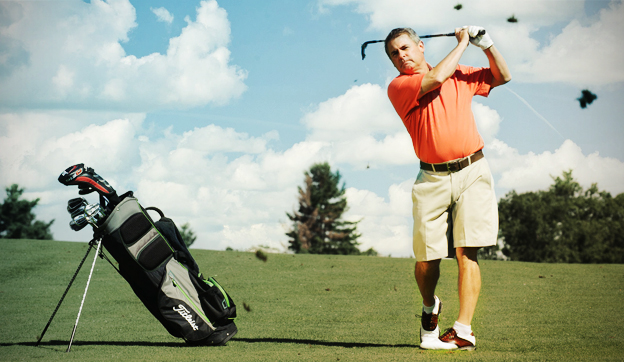
As a Golf Fitness Specialist employed at a Country Club, I often train senior members(55+) who complain of lost distance and rising handicaps. Many in this age group believe if they can just gain a few more yards, it will help drive their handicaps back to where they once were. The reality is their declining score is often caused by more than just the loss of distance.
With the advent of TPI functional fitness screening, fitness trainers have a valuable tool to identify and correct many of the swing flaws plaguing the senior player. Most in this age group do not score particularly well in several of the TPI tests (particularly the deep squat and balance tests), and this is to be expected given the aging process. While remedial exercises are no doubt a critical part of the improvement process, it is often the lack of overall muscular strength and endurance that is the root cause of their declining game.
For many who just play golf or walk to stay fit and do not regularly practice strength training, age related loss of muscle mass (sarcopenia) becomes a major culprit in the loss of flexibility and power. Along with declining aerobic capacity, it becomes difficult for many older players to finish a round without fatigue. It is often the last 4 or 5 holes where most strokes are lost as tired arms and legs trudge off the 18th green.
In developing training activities for these players, I have found a general strength training routine, working all the major muscle groups (with considerable core exercises) along with a regular aerobic program, is critical not just for their golf game, but for improving their overall health and wellness. Usually, I prescribe an 8-12 week functional training program, which includes weight training 3 days per week and aerobic exercise 3 days per week (on non-strength training days). About the 3rd week, I begin incorporating the TPI functional screening corrections and the results are highly predictable; improved strength and cardiovascular endurance, increased power and distance, not to mention lower blood pressure and cholesterol levels. I am also a big fan of balance training as aging proprioception and somatosensory systems require concentrated effort for improvement. Ankle and wrist weights can improve overall sensitivity and I often use them on the driving range and putting green.
Many seniors have also gained a bit of weight over the years and it is becoming increasingly rare to find those who have not sustained some type of shoulder, knee, hip or back injury. Often we must address all of these issues to see any real improvement, so a medical evaluation is always advised. I also make it a habit of taking each client’s blood pressure before their workout, and have screened several with blood pressure so high it was unsafe to train. While heart attacks and strokes are rare in the gym, it’s better to be safe than sorry, especially if they are overweight and not well conditioned.
While weight management is always good for overall health improvement, weight loss for many can help improve overall swing mechanics and is clearly a significant factor to improve on course endurance. I am a big fan of a low refined sugar diet, and my “D’GOLF” diet plan has helped a number of clients achieve their weight goals without a lot of stress. You can visit my website (www.GOL-FIT.com) for more information.
On course nutrition is a huge factor in making sure a player can finish a round with the proper energy and muscle control, at any age. Run out of muscle glycogen and your body starts recruiting other forms of energy, not to mention the risk of low blood sugar. Central nervous system response is critical to making sure muscle contractions occur properly and if your body lacks sufficient fuel or becomes dehydrated, the commands from your brain to your muscles are going to be interrupted and that means it’s more than likely players will be “leakin’ oil” on the back nine.
I normally recommend a proper meal an hour or so before a round (a balance of 50% carbohydrates, 33% protein and 17% fat). After finishing nine holes, a snack of some nuts, an apple, banana, or other low glycemic food is good to keep energy levels up and insulin levels down. Somewhere about the 16th hole it’s ok to have an energy bar with some sugar to provide a boost for the last few holes. However, I recommend testing this sequence as the “law of individual differences” applies. This strategy will likely work well for most, but others may need to adjust this formula to their individual metabolisms.
The challenges facing the aging player are often formidable. For those willing to invest both the time and the energy to properly train, however, the payoff is not only significant in terms of their golf game, but results in the reduced risk of disease and frailty and is the gateway to a more vibrant and energetic life.
Below are some of my favorite exercises that I use with many of my senior players but are effective for players of any age. Try incorporating these into your current exercise regimen.
FOR BALANCE AND STABILITY:
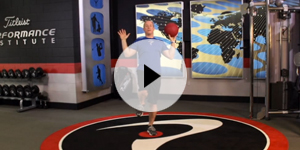
Single Leg Rainbow Pass

Standing Knee Chest Tucks
FOR THE LOWER BODY:
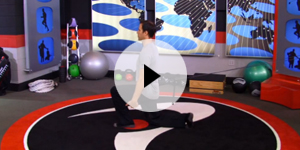
Assisted Lunge
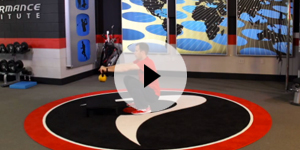
Dumbbell Assisted Deep Squat
FOR THE GLUTES:
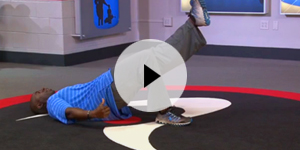
Bridge with Leg Extension